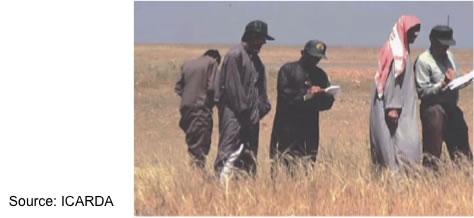

Participatory plant breeding
Here, selection is conducted in farmers' fields (rather than on a breeding station). The idea is to include the farmers' understanding of their crops as an input into the selection process.
PPB is not really a "breeding" system, it is a "selection" system; the breeder's job is still to generate the variation, and the farmers' to determine what plant types are best suited for their production system.
A hard decision is how early in the breeding cycle the farmers should best become involved. If the stage is too late, then much of the variation of relevance to the farmers may have been discarded by the breeder. If it is too early, then the breeding populations may not be homogeneous enough for non-replicated, subjective and largely uncontrolled trials to make sense.


